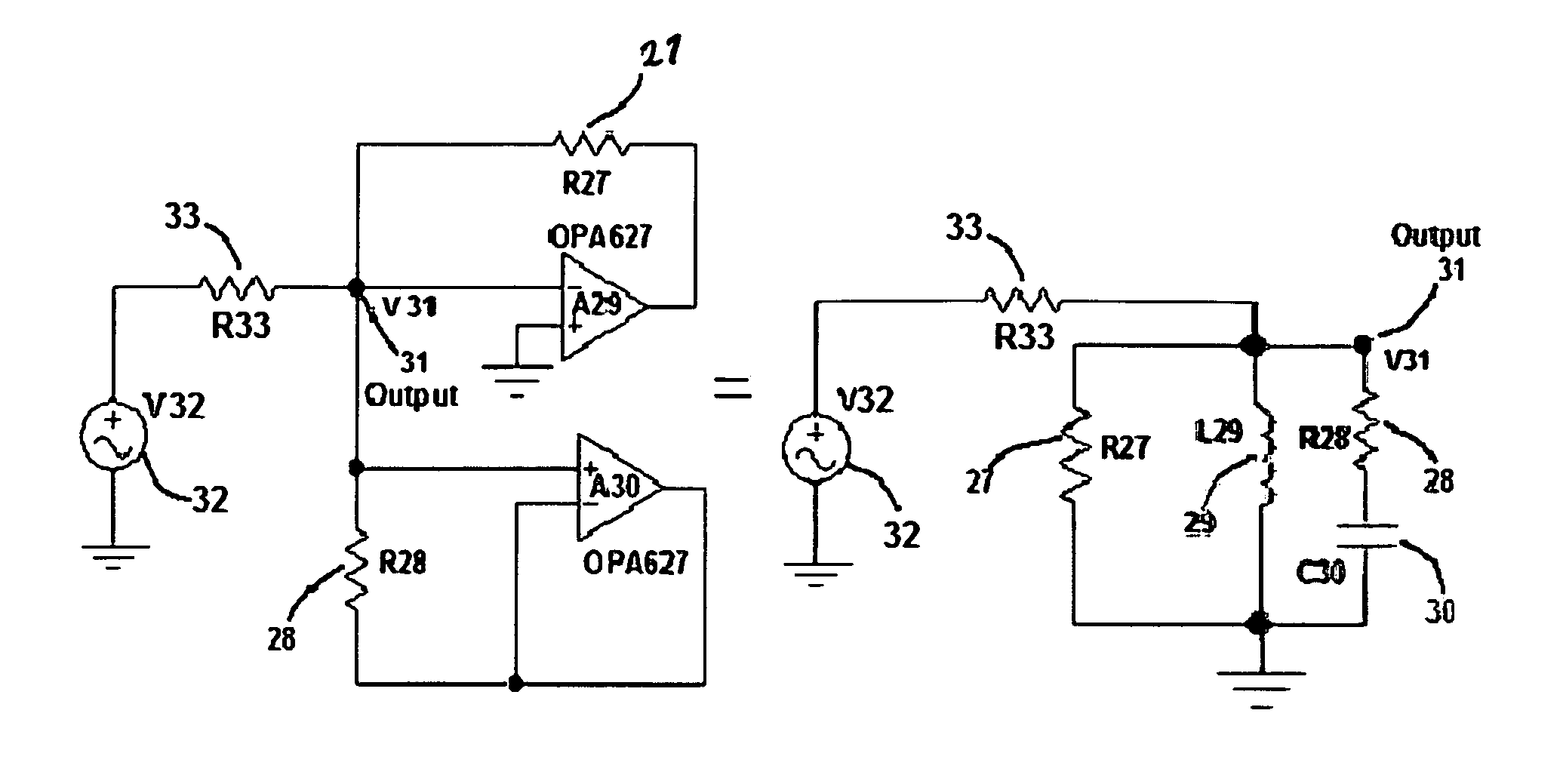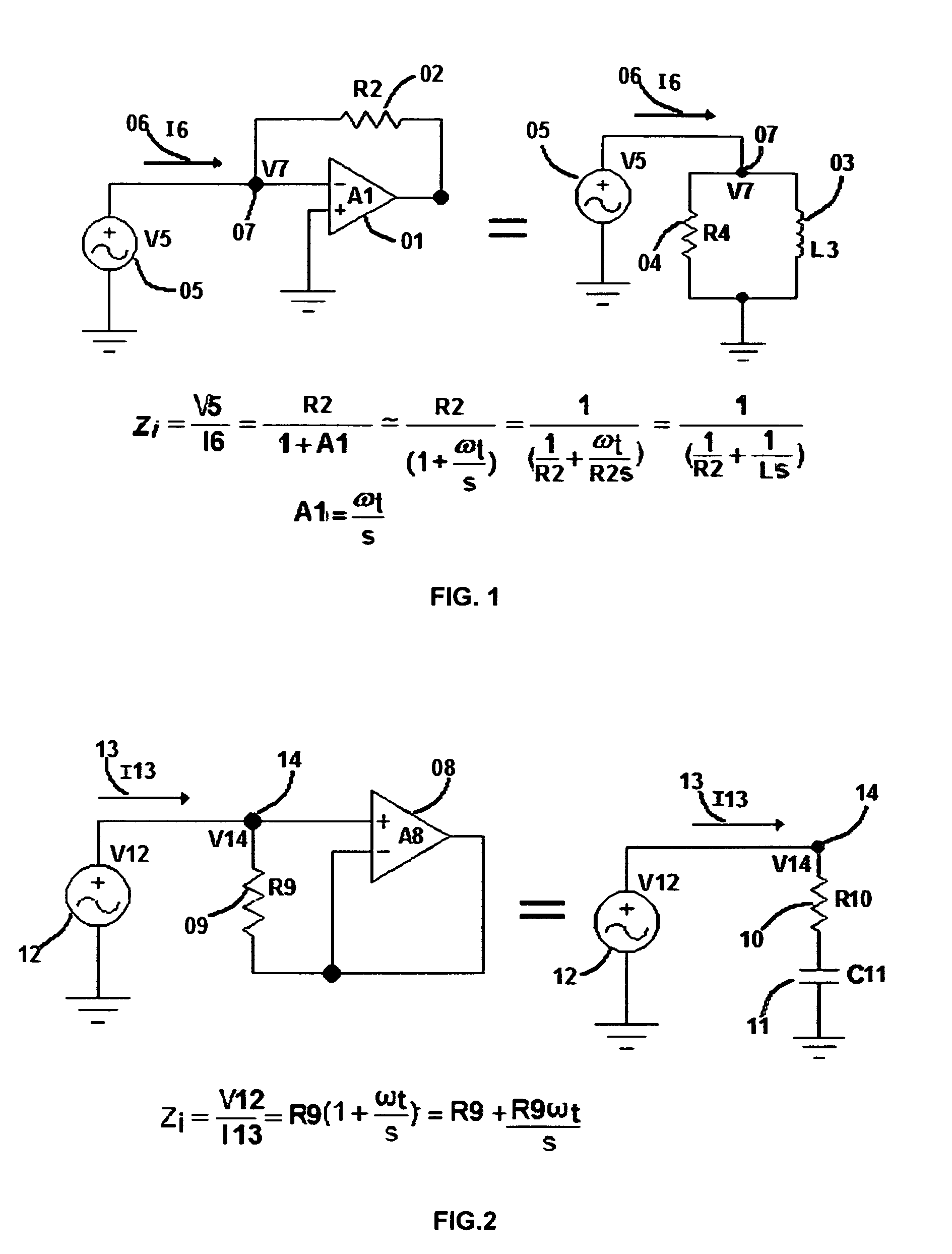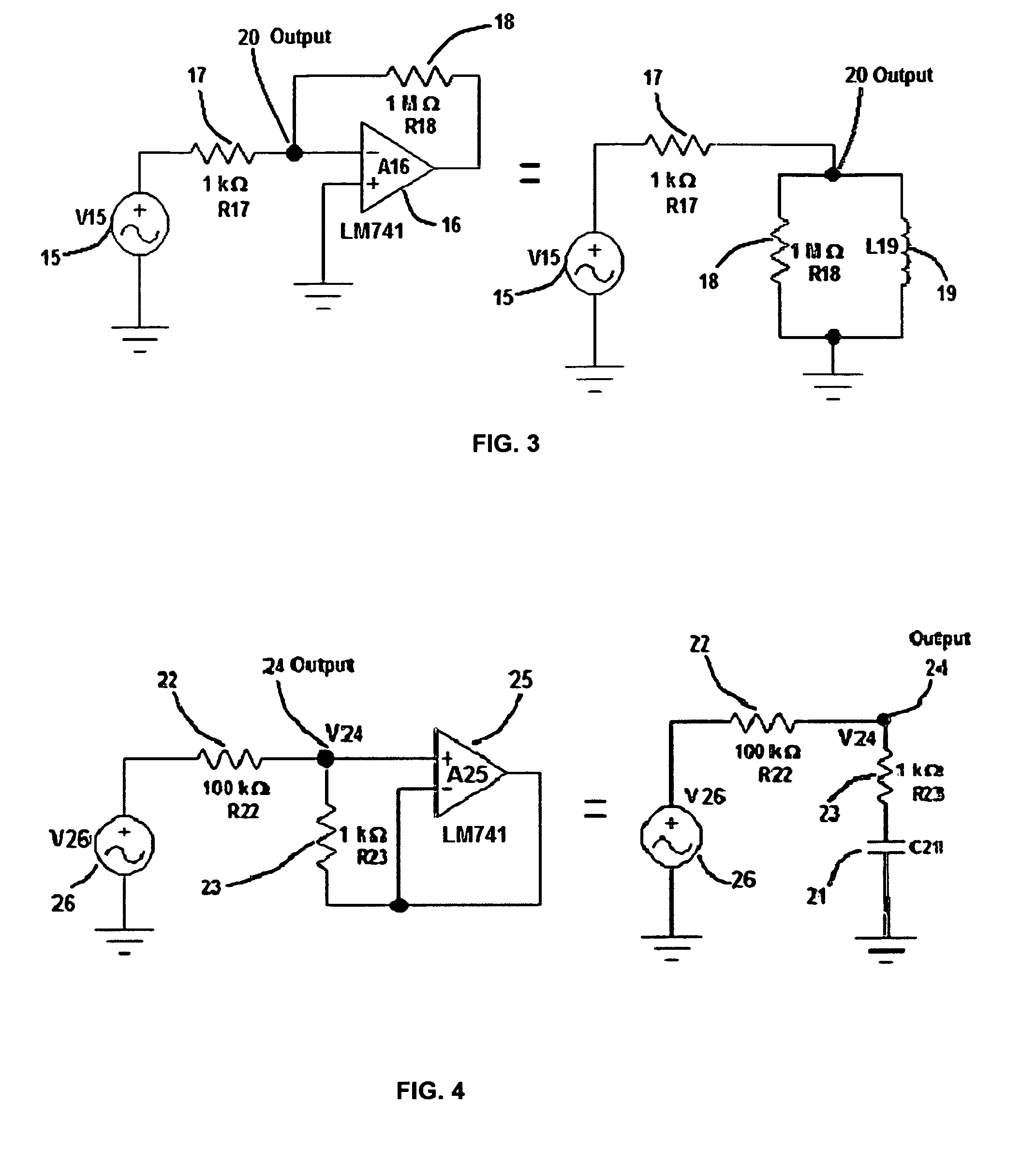Op-R, a solid state filter
a solid-state filter and filter technology, applied in the field of electric filters, can solve the problems of compromising gain-bandwidth, difficult to achieve practical values on a monolithic chip, etc., and achieve the effects of low sensitivity, high gain-bandwidth, and low sensitivity
- Summary
- Abstract
- Description
- Claims
- Application Information
AI Technical Summary
Benefits of technology
Problems solved by technology
Method used
Image
Examples
Embodiment Construction
[0089]The present invention relates to a solid-state filter realized on a monolithic integrated circuit (IC). The IC is capable of physically realizing a broad class of filters over a wide frequency range. The filter class includes low pass, high pass, band pass, and band reject. The frequency range is either: audio, sub-audio, radio, video or HF, as well as UHF.
[0090]An object of the invention is to physically realize filters without the need of inductors or capacitors, and instead, utilizes operational amplifiers (op-amps) and resistors; hence the name OP-R.
Basic Elements
[0091]Starting with the inductance element, FIG. 1 shows the equivalence of an OP-AMP 1 (A1) and an associated feedback RESISTOR 2 (R2) to a lossy inductor composed of INDUCTOR 3 (L3) and its associated parallel RESISTOR 4 (R4). Both equivalent circuits are driven by the same VOLTAGE SOURCE 5 (V5). Each circuit draws CURRENT 6 (I6) and has a responding VOLTAGE 7 (V7). The equivalence of the two circuits is given i...
PUM
 Login to View More
Login to View More Abstract
Description
Claims
Application Information
 Login to View More
Login to View More - R&D
- Intellectual Property
- Life Sciences
- Materials
- Tech Scout
- Unparalleled Data Quality
- Higher Quality Content
- 60% Fewer Hallucinations
Browse by: Latest US Patents, China's latest patents, Technical Efficacy Thesaurus, Application Domain, Technology Topic, Popular Technical Reports.
© 2025 PatSnap. All rights reserved.Legal|Privacy policy|Modern Slavery Act Transparency Statement|Sitemap|About US| Contact US: help@patsnap.com



